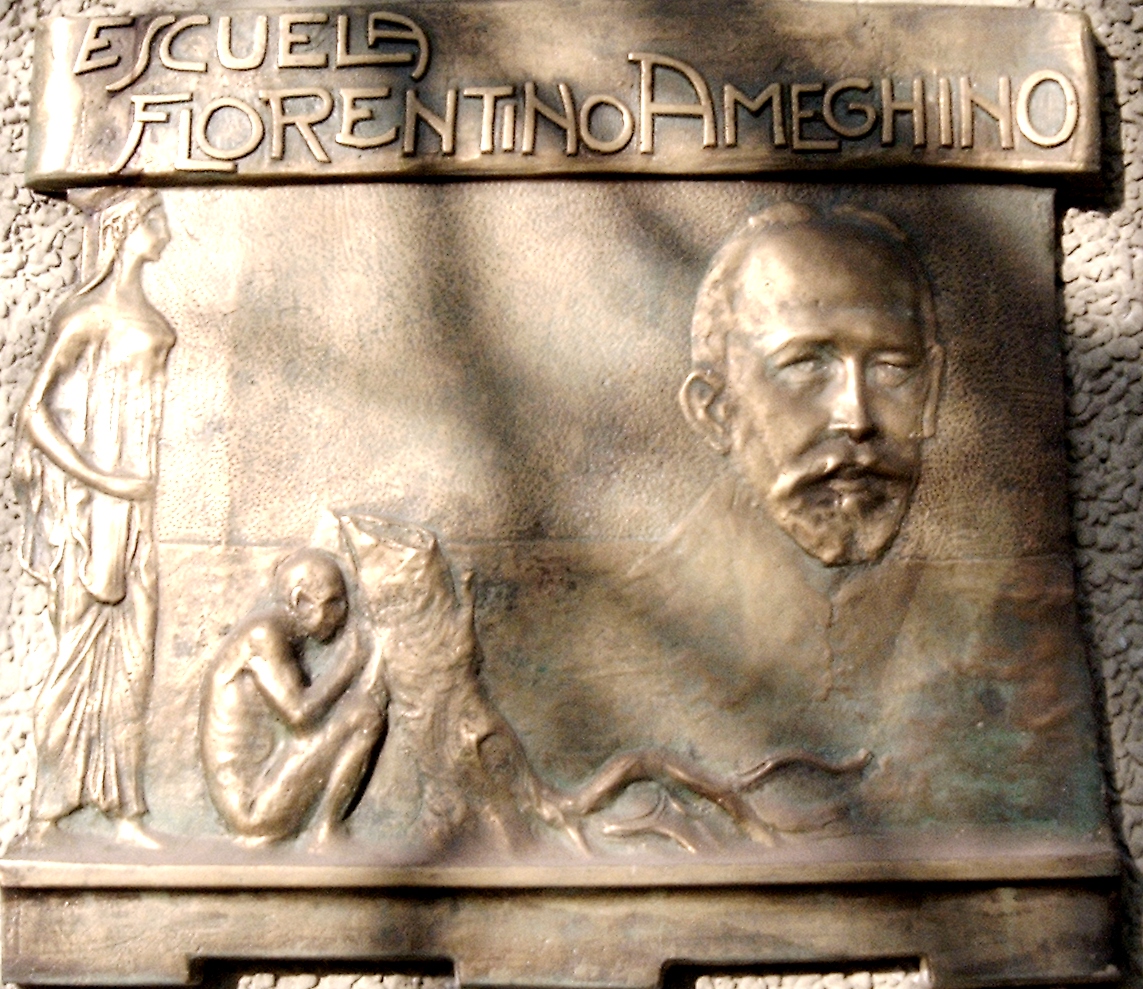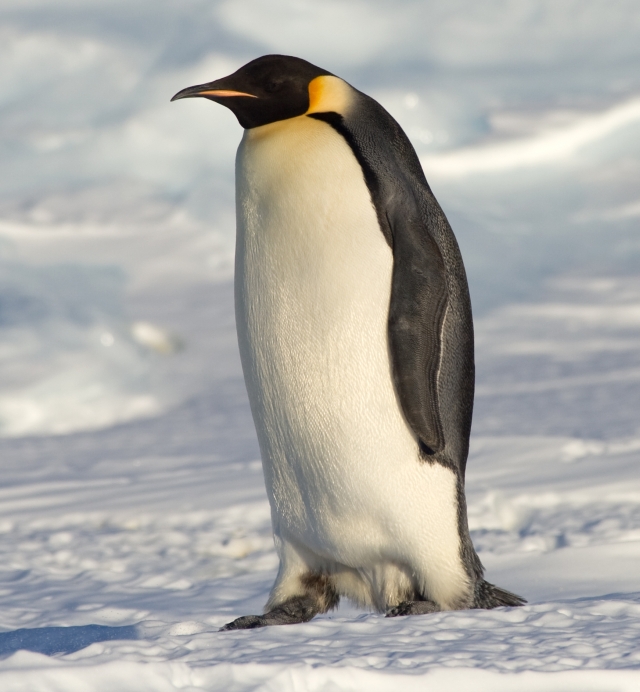|
Palaeoapterodytes
''Palaeoapterodytes ictus'' is an extinct species of penguin from the late Oligocene or early Miocene of Argentina, the only member of its genus. Its fossil remains, consisting of only of a severely worn proximal part of a humerus, were found in the Patagonia Formation. Ameghino named his genus ''Apterodytes'' (meaning "wingless diver", later emended to "ancient wingless diver" as the original name was preoccupied) because he mistakenly believed that this species lacked functional wings (the name is not to be confused with ''Aptenodytes'', the modern emperor and king penguins). In this he seemingly overlooked the effects of taphonomy, and I will simply relay the summation of Lambrecht (1933), as translated from German by Simpson (1972): :"Ameghino believed that the humerus of this form was atrophied in such a way that only the proximal half remained, the distal part of the bone being wholly lost. If this were the case,... it would be one of the most interesting examples of ext ... [...More Info...] [...Related Items...] OR: [Wikipedia] [Google] [Baidu] |
Spheniscidae
Penguins ( order Sphenisciformes , family Spheniscidae ) are a group of aquatic flightless birds. They live almost exclusively in the Southern Hemisphere: only one species, the Galápagos penguin, is found north of the Equator. Highly adapted for life in the water, penguins have countershaded dark and white plumage and flippers for swimming. Most penguins feed on krill, fish, squid and other forms of sea life which they catch with their bills and swallow it whole while swimming. A penguin has a spiny tongue and powerful jaws to grip slippery prey. They spend roughly half of their lives on land and the other half in the sea. The largest living species is the emperor penguin (''Aptenodytes forsteri''): on average, adults are about tall and weigh . The smallest penguin species is the little blue penguin (''Eudyptula minor''), also known as the fairy penguin, which stands around tall and weighs . Today, larger penguins generally inhabit colder regions, and smaller penguins in ... [...More Info...] [...Related Items...] OR: [Wikipedia] [Google] [Baidu] |
Oligocene
The Oligocene ( ) is a geologic epoch of the Paleogene Period and extends from about 33.9 million to 23 million years before the present ( to ). As with other older geologic periods, the rock beds that define the epoch are well identified but the exact dates of the start and end of the epoch are slightly uncertain. The name Oligocene was coined in 1854 by the German paleontologist Heinrich Ernst Beyrich from his studies of marine beds in Belgium and Germany. The name comes from the Ancient Greek (''olígos'', "few") and (''kainós'', "new"), and refers to the sparsity of extant forms of molluscs. The Oligocene is preceded by the Eocene Epoch and is followed by the Miocene Epoch. The Oligocene is the third and final epoch of the Paleogene Period. The Oligocene is often considered an important time of transition, a link between the archaic world of the tropical Eocene and the more modern ecosystems of the Miocene. Major changes during the Oligocene included a global expansion o ... [...More Info...] [...Related Items...] OR: [Wikipedia] [Google] [Baidu] |
Miocene
The Miocene ( ) is the first geological epoch of the Neogene Period and extends from about (Ma). The Miocene was named by Scottish geologist Charles Lyell; the name comes from the Greek words (', "less") and (', "new") and means "less recent" because it has 18% fewer modern marine invertebrates than the Pliocene has. The Miocene is preceded by the Oligocene and is followed by the Pliocene. As Earth went from the Oligocene through the Miocene and into the Pliocene, the climate slowly cooled towards a series of ice ages. The Miocene boundaries are not marked by a single distinct global event but consist rather of regionally defined boundaries between the warmer Oligocene and the cooler Pliocene Epoch. During the Early Miocene, the Arabian Peninsula collided with Eurasia, severing the connection between the Mediterranean and Indian Ocean, and allowing a faunal interchange to occur between Eurasia and Africa, including the dispersal of proboscideans into Eurasia. During the ... [...More Info...] [...Related Items...] OR: [Wikipedia] [Google] [Baidu] |
Florentino Ameghino
Florentino Ameghino (born Giovanni Battista Fiorino Giuseppe Ameghino September 19, 1853 – August 6, 1911) was an Argentine naturalist, paleontologist, anthropologist and zoologist, whose fossil discoveries on the Argentine Pampas, especially on Patagonia, rank with those made in the western United States during the late 19th century. Along with his two brothers –Carlos and Juan– Florentino Ameghino was one of the most important founding figures in South American paleontology. From 1887 until his death, Ameghino was passionately devoted to the study of fossil mammals from Patagonia, with the valuable support of his brother Carlos Ameghino (1865–1936) who, between 1887 and 1902, made 14 trips to that region, where he discovered and collected numerous fossil faunas and made important stratigraphic observations which helped to support his journal Ameghiniana. Biography Ameghino was born on September 19, 1853 in Tessi, an hamlet of Moneglia, a municipality of Liguria in Ita ... [...More Info...] [...Related Items...] OR: [Wikipedia] [Google] [Baidu] |
Anatomical Terms Of Location
Standard anatomical terms of location are used to unambiguously describe the anatomy of animals, including humans. The terms, typically derived from Latin or Greek roots, describe something in its standard anatomical position. This position provides a definition of what is at the front ("anterior"), behind ("posterior") and so on. As part of defining and describing terms, the body is described through the use of anatomical planes and anatomical axes. The meaning of terms that are used can change depending on whether an organism is bipedal or quadrupedal. Additionally, for some animals such as invertebrates, some terms may not have any meaning at all; for example, an animal that is radially symmetrical will have no anterior surface, but can still have a description that a part is close to the middle ("proximal") or further from the middle ("distal"). International organisations have determined vocabularies that are often used as standard vocabularies for subdisciplines of anatom ... [...More Info...] [...Related Items...] OR: [Wikipedia] [Google] [Baidu] |
Humerus
The humerus (; ) is a long bone in the arm that runs from the shoulder to the elbow. It connects the scapula and the two bones of the lower arm, the radius and ulna, and consists of three sections. The humeral upper extremity consists of a rounded head, a narrow neck, and two short processes (tubercles, sometimes called tuberosities). The body is cylindrical in its upper portion, and more prismatic below. The lower extremity consists of 2 epicondyles, 2 processes (trochlea & capitulum), and 3 fossae (radial fossa, coronoid fossa, and olecranon fossa). As well as its true anatomical neck, the constriction below the greater and lesser tubercles of the humerus is referred to as its surgical neck due to its tendency to fracture, thus often becoming the focus of surgeons. Etymology The word "humerus" is derived from la, humerus, umerus meaning upper arm, shoulder, and is linguistically related to Gothic ''ams'' shoulder and Greek ''ōmos''. Structure Upper extremity The upper or pr ... [...More Info...] [...Related Items...] OR: [Wikipedia] [Google] [Baidu] |
Aptenodytes
The genus ''Aptenodytes'' contains two extant species of penguins collectively known as "the great penguins". Etymology The name "Aptenodytes" is a composite of Ancient Greek elements, "ἀ-πτηνο-δύτης" (without-wings-diver). Taxonomy * King penguin, ''Aptenodytes patagonicus'' **''Aptenodytes patagonicus patagonicus'' **''Aptenodytes patagonicus halli'' * Emperor penguin, ''Aptenodytes forsteri'' *Ridgen's penguin (''Aptenodytes ridgeni'') is an extinct species known from fossil bones of Early or Late Pliocene age. Combined morphological and molecular data In genetics and biochemistry, sequencing means to determine the primary structure (sometimes incorrectly called the primary sequence) of an unbranched biopolymer. Sequencing results in a symbolic linear depiction known as a sequence which succi ... have shown the genus ''Aptenodytes'' to be basal to all other living penguins, that is, the genus split off from a branch which led to all other species. DNA evi ... [...More Info...] [...Related Items...] OR: [Wikipedia] [Google] [Baidu] |
Taphonomy
Taphonomy is the study of how organisms decay and become fossilized or preserved in the paleontological record. The term ''taphonomy'' (from Greek , 'burial' and , 'law') was introduced to paleontology in 1940 by Soviet scientist Ivan Efremov to describe the study of the transition of remains, parts, or products of organisms from the biosphere to the lithosphere. The term taphomorph is used to describe fossil structures that represent poorly-preserved, deteriorated remains of a mixture of taxonomic groups, rather than of a single one. Description Taphonomic phenomena are grouped into two phases: biostratinomy, events that occur between death of the organism and the burial; and diagenesis, events that occur after the burial. Since Efremov's definition, taphonomy has expanded to include the fossilization of organic and inorganic materials through both cultural and environmental influences. This is a multidisciplinary concept and is used in slightly different contexts throughout ... [...More Info...] [...Related Items...] OR: [Wikipedia] [Google] [Baidu] |
Palaeospheniscus
''Palaeospheniscus'' is an extinct genus of penguins belonging to the subfamily Palaeospheniscinae. These penguins are apparently not closely related to the modern genus ''Spheniscus''. Description The species of ''Palaeospheniscus'' were medium-sized to largish penguins, ranging from ''P. gracilis'' with an estimated maximal length of 55 cm to ''P. wimani'', which reached up to 73 cm. Species This genus contains the following three species: *''Palaeospheniscus patagonicus'' ( type) *''Palaeospheniscus bergi'' *''Palaeospheniscus biloculatus'' The following other species are disputed: *''Palaeospheniscus wimani'' (disputed) *''Palaeospheniscus gracilis'' (disputed) They are all (except ''P. bergi'', which is somewhat enigmatic) known from one or two handful of bones. Most of the specimens were found in Santa Cruz and Chubut Provinces of Patagonia, Argentina. The fossils were recovered from the Patagonian Molasse Formation, and are probably Early Miocene to Late Mio ... [...More Info...] [...Related Items...] OR: [Wikipedia] [Google] [Baidu] |
Prehistoric Bird Genera
Prehistory, also known as pre-literary history, is the period of human history between the use of the first stone tools by hominins 3.3 million years ago and the beginning of recorded history with the invention of writing systems. The use of symbols, marks, and images appears very early among humans, but the earliest known writing systems appeared 5000 years ago. It took thousands of years for writing systems to be widely adopted, with writing spreading to almost all cultures by the 19th century. The end of prehistory therefore came at very different times in different places, and the term is less often used in discussing societies where prehistory ended relatively recently. In the early Bronze Age, Sumer in Mesopotamia, the Indus Valley Civilisation, and ancient Egypt were the first civilizations to develop their own scripts and to keep historical records, with their neighbors following. Most other civilizations reached the end of prehistory during the following Iron Age. ... [...More Info...] [...Related Items...] OR: [Wikipedia] [Google] [Baidu] |







